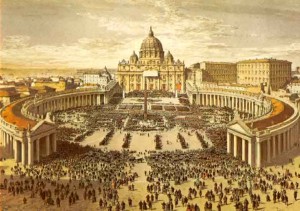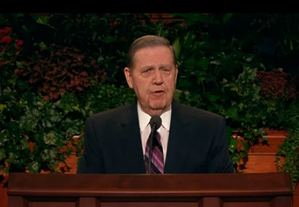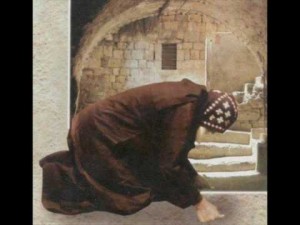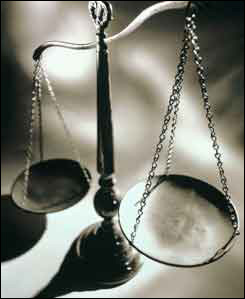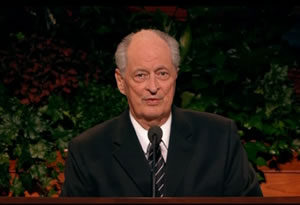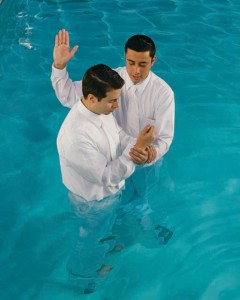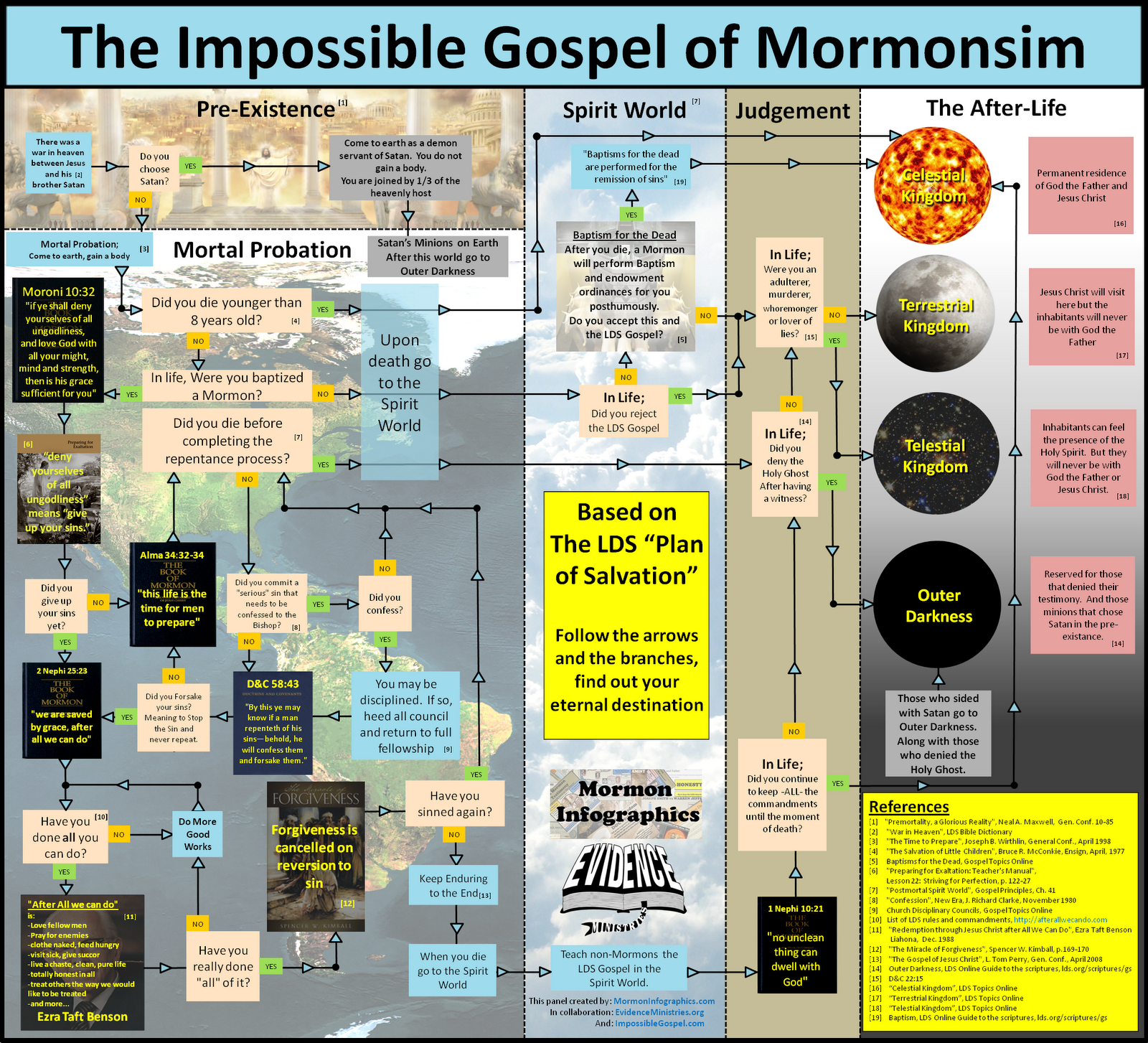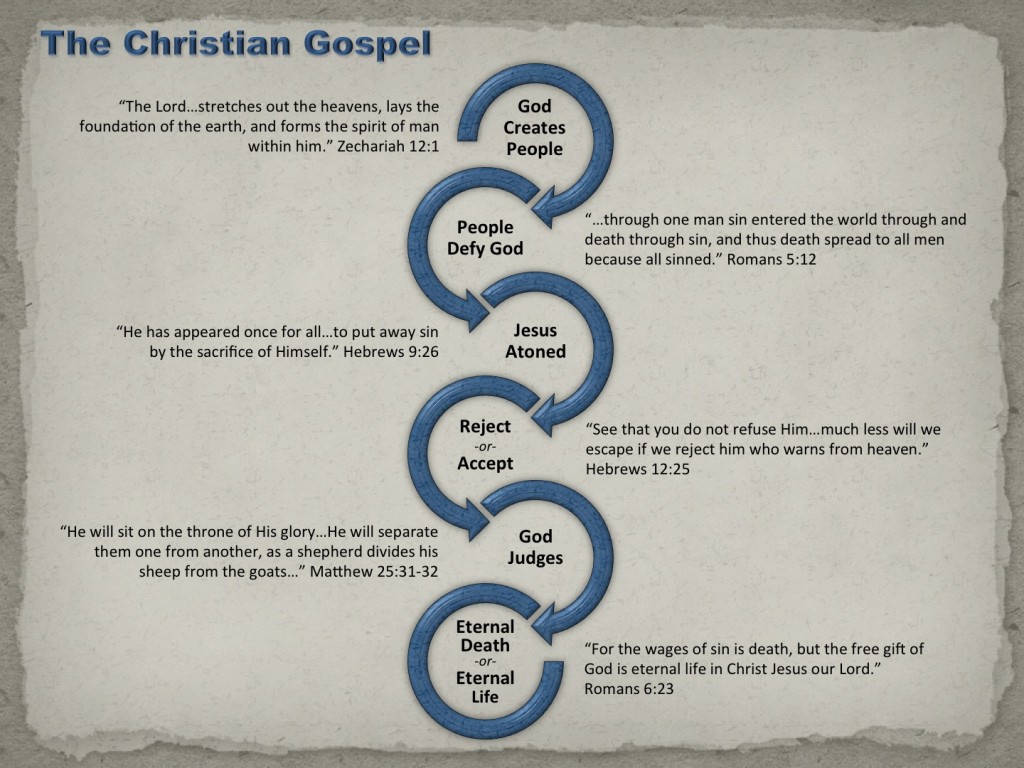In honor of the 35th anniversary of Mormon President Spencer W. Kimball’s announcement of the end of the priesthood ban against black Mormons (D&C Declaration 2), we are reposting Aaron Shafovaloff’s 30th anniversary article, “Shame, Shame, Shame: Thirty Years Later And Still No Apology.”
Still Repairing Brigham’s Mess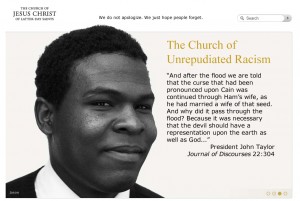
Mormon apologist Blake Ostler once said, “I personally believe that [Brigham Young’s] theology was a disaster for the most part” (>>). We have multiple reasons to concur with Blake (more than he would agree with), as Mormonism has spent much of its post-Brigham history picking up the pieces from the catastrophic mess of theology he left behind. The 1916 First Presidency statement on divine investiture and Elohim/Jehovah identities was largely driven by an effort to repair Brigham Young’s damaging Adam-God teaching. Contrary to the notion that it died with Brigham, it had carried well on into the 20th century. Some Mormons today are deeply embarrassed over Young’s teaching that Jesus was physically conceived by a natural union between Mary and the Father (who, for Brigham, of course, was Adam). Many Mormons have tragically settled for an “I don’t know” answer to the question of whether sexual intercourse was involved in the conception of Christ. Along with Adam-God, Brigham’s teaching that God still progresses in knowledge and power was condemned as a deadly, damning heresy by apostle Bruce McConkie. Then there’s individual blood atonement, men living on the Sun, participation in polygamy being absolutely necessary for Celestial exaltation, and on, and on. Many Mormons quietly write off Brigham Young as a crazy old uncle who has said very stupid, very irresponsible, very embarrassing, very damaging things. The problem is that he happened to say most of these things from the Tabernacle pulpit in a position of influential leadership and self-claimed prophetic authority. Mormons today try to laugh it off. Stephen Robinson even suggested that Adam-God might have been a joke. But at the end of the day Christians aren’t laughing. We have a higher standard for prophets than Mormonism allows. For us, becoming a Mormon would mean drastically lowering the bar for men who claim to be God’s living spokesmen on earth.
Reversing a “Direct Commandment of the Lord” Based Upon a “Doctrine of the Church”
On June 8, 1978, Mormonism attempted to reverse yet another one of Brigham’s embarrassing doctrines, the ban on blacks from holding the Mormon priesthood. The dominant historical explanation given for the ban was an appeal to pre-mortal decisions or indecisions. Negros were not as valiant in the pre-existence, and were cursed with the mark of Cain, black skin. This explanation was taught and expressed by LDS prophets and apostles, from Conference pulpits to a First Presidency statement:
“The attitude of the Church with reference to the Negroes remains as it has always stood. It is not a matter of the declaration of a policy but of direct commandment from the Lord, on which is founded the doctrine of the Church from the days of its organization, to the effect that Negroes may become members of the Church but that they are not entitled to the Priesthood at the present time. The prophets of the Lord have made several statements as to the operation of the principle. President Brigham Young said, ‘Why are so many of the inhabitants of the earth cursed with a skin of blackness? It comes in consequence of their father’s rejecting the power of the Holy Priesthood, and the law of God.’ They will go down to death. And when all the rest of the children have received their blessings in the Holy Priesthood, then that curse will be removed from the seed of Cain, and receive all the blessings we are entitled to.’ President Wilford Woodruff made the following statement: ‘The day will come when all that race will be redeemed and possess all the blessings which we now have.’ The position of the Church regarding the Negro may be understood when another doctrine of the church is kept in mind, namely, that the conduct of spirits in the pre-mortal existence has some determining effect upon the conditions and circumstances under which these spirits take on mortality, and that while the details of this principle have not been made known, the principle itself indicates that the coming to this earth and taking on mortality is a privilege that is given to those who maintained their first estate; and that the worth of the privilege is so great that spirits are willing to come to earth and take on bodies no matter what the handicap may be as to the kind of bodies they are to secure; and that among the handicaps, failure of the right to enjoy in mortality the blessings of the priesthood is a handicap which spirits are willing to assume in order that they might come to earth. Under this principle there is no injustice whatsoever involved in this deprivation as to the holding of the priesthood by the Negroes.” (Official First Presidency statement, August 17, 1951 [some sources date this to 1949], cf. John Lewis Lund, The Church and the Negro, p.89).
Mere Folklore or Institutionalized Racism?
In spite of this, Mormon leaders today continue to say things like,
“When you think about it, that’s just what it is — folklore. It’s never really been official doctrine… We have to keep in mind that it’s folklore and not doctrine… It’s never been recorded as such” (LDS General Authority Sheldon F. Child, quoted in “LDS marking 30-year milestone”, by Carrie A. Moore, Deseret News, June 7, 2008).
“This folklore is not part of and never was taught as doctrine by the church” (LDS spokesman Mark Tuttle, quoted in “Mormon and Black”, by Peggy Fletcher Stack, Salt Lake Tribune, June 7, 2008)
This gives the impression that the teaching and belief had a mere bottom-dwelling existence, only kept alive by the culture in a way not initiated by or acquiesced to by the overarching institution. In the dictionary, “folklore” is defined as unwritten lore that is passed down through tradition or anecdote. Calling the “curse of Cain” teaching mere folklore obscures the fact that it was institutionally promoted and institutionally perpetuated—publicly and explicitly and in writing. It was rooted in the teachings of men considered to be prophets and apostles, the conduits of prophetic counsel and the stream of continuing revelation.
No One Needs the Mormon Priesthood Anyway
As a Christian I find the reversal on one level insignificant. The Aaronic priesthood is, according to Hebrews, “useless”, “weak”, and “obsolete”, a shadow of the Messiah to come who would serve as our sufficient sacrifice and priest. The “Aaronic priesthood” of Mormonism today doesn’t remotely follow the functions of the priesthood as described by the Old Testament. In the New Testament, Melchizedek is held up as an analogy for Christ’s unique priestly role and identity, but there is never described an ordained Melchizedek priesthood that flows from Christ to male followers. Mormonism simply reads Joseph Smith’s imaginary priesthood structure into the Bible. And I am not at all interested in obeying Satan when he tells people, “See, you are naked. Take some fig leaves and make you aprons. Father will see your nakedness.” Christians don’t feel like any non-Mormon Christian is missing out from Mormon temples. In Christ “are hidden all the treasures of wisdom and knowledge” (Colossians 2:3). Our intensified experiences with God and his people come through, among other things, reading his word, serving, singing, loving,suffering, praying, communing with our brotherhood in Christ, being swallowed up in the bigness of God’s creation. We don’t have to step inside a building to experience the Holy Spirit in a deeper way. Christians have the permanently indwelling Holy Spirit, immediately accessible, received at conversion in the same way we received justification and the forgiveness of sins: by grace through faith apart from personal works or merit or earning or worthiness. It is Mormons, white and black, who are missing out by being led astray from having a two-way personal relationship with Jesus Christ, based on the foundation of freely received eternal life.
Prevented From Being Complete Followers and Servants of Jesus?
In his book In the Lord’s Due Time, the first black to receive the Mormon priesthood after the 1978 reversal, Joseph Freeman, tells of hearing about the priesthood announcement. He writes,
“As I hung up the phone, little beads of perspiration broke out on my forehead, and my knees began to shake uncontrollably. It was true! It was really true! I could hold the priesthood! My lifetime dream of becoming a complete follower and servant of Jesus had come true.”
Did you catch that? Mormonism had deceived Freeman into thinking that, because he was black and because he couldn’t enter into a man-made temple, he could not yet be a complete follower and servant of Christ. Let that sink in.
Withholding blessings of the New Testament church (whatever one deems those blessings to be) from people based on skin-color or ethnicity reflects a fundamental misunderstanding of the gospel. The promise and assurance of the fullness of eternal life is not for the religious elite, but for the brokenhearted, coffee-drinking, cigarette-smoking, nose-pierced, foul-mouthed, rough-edged, self-despairing, barely spiritual, unworthy moral failures who come to Christ with the empty hand of faith, trusting him for the free promise of eternal life and the heart-changing indwelling of the Spirit. Scripture doesn’t take this lightly. Come to Christ with empty hands and you will have eternal joy. Put up the divisive, unscriptural barriers of moralism or ethnicity or skin-color or quasi-masonic or distinctively Jewish ordinances, and you incite what John Piper calls the “compassionate rage” of true apostles like Paul, who start calling down anathema (Galatians 1:6-9).
Institutional Integrity Demands an Apology and a Repudiation
Mormon apostle Jeffrey Holland seems to have at least a partial understanding of the institutional responsibility Mormonism has to make right the wrongs. In an interview associated with the PBS special, “The Mormons”, he said the following regarding actions the Mormon Church could take to make sure that the curse of Cain teaching isn’t perpetuated:
“I think we can be unequivocal and we can be declarative in our current literature, in books that we reproduce, in teachings that go forward, whatever, that from this time forward, from 1978 forward, we can make sure that nothing of that is declared. That may be where we still need to make sure that we’re absolutely dutiful, that we put [a] careful eye of scrutiny on anything from earlier writings and teachings, just [to] make sure that that’s not perpetuated in the present. That’s the least, I think, of our current responsibilities on that topic.” (>>)
The problem for Holland is that he has bought into a shallow, inadequate, and irresponsible way of dealing with false teachings and false beliefs once promoted by Mormon prophets and apostles. In a noteworthy Mormon blog post called, “How does Mormon doctrine die?“, Margaret Young is quoted as saying,
“Card-carrying Mormons do often believe that Blacks were fence sitters in the pre-existence and that polygamy is essential to eternal progression. Neither position has been formally repudiated by the powers that be. We have merely distanced ourselves from them.”
Kaimi Wenger, the author of the post, goes on to write:
“To the extent that they are not repeated and reinforced, unrepudiated ideas slowly fade from the community’s consciousness. This is in large degree because of the structure of Mormon belief. Mormon theology is unusually informal, vague and undefined. Because the church does not issue encyclicals or Summa Theologica, our theology is largely of the what-the-prophets-say-today variety… Our belief structure being what it is, [old ideas] cannot truly be killed — but neither are they really alive. “
Mormon leaders depend on this. Formal repudiation is avoided by Mormon leaders, as it would highlight the fallibility of church leaders (particularly prophets and apostles) and potentially bring a sensitive, embarrassing issue to light, prompting many to investigate material from earlier Church leaders which isn’t faith-promoting. Explicit, formal repudiation of past teaching that names names and quotes quotes would set a dangerous precedent in a religion which fosters so much dependency on the reliability of the institution’s succession of leaders. To save face, Mormon leaders opt for a quiet way of distancing old ideas, allowing them to continue amongst the culture in part, but betting on the forgetfulness and historical ignorance of future generations.
Authentic repentance, integrity, and love for people would demand not only a distancing by a lack of repetition, but also a formal, official, explicit apology for and repudiation of the priesthood ban and the teachings historically used to theologically justify it. Mormonism’s institution arrogantly sees itself as above having to give an apology for things like this. In fact, Mormonism has fallen short of even admitting the priesthood ban was wrong or racist. Gordon B. Hinckley had the audacity to say of the ban, “I don’t think it was wrong.” Marcus Martins, a black Mormon and the chair of the department of religious education at BYU-Hawaii, has been warped into thinking “The [priesthood] ban itself was not racist“.
Aspects and echos of the principles behind the curse of Cain teaching continue still today. At a recent BYU devotional the dean of Religious Education, Terry Ball, said,
“Have you ever wondered why you were born where and when you were born? Why were you not born 500 years ago in some primitive aboriginal culture in some isolated corner of the world? Is the timing and placing of our birth capricious? For Latter-day Saints, the answer is no. Fundamental to our faith is the understanding that before we came to this earth we lived in a premortal existence with a loving Heavenly Father. We further understand that in that premortal state we had agency and that we grew and developed as we used that agency. Some, as Abraham learned, became noble and great ones. We believe that when it came time for us to experience mortality, a loving Heavenly Father, who knows each of us well, sent us to earth at the time and in the place and in circumstances that would best help us reach our divine potential and help Him maximize His harvest of redeemed souls” (“To Confirm and Inform: A Blessing of Higher Education,” March 11, 2008, BYU Devotional).
Settling for Less than Full Dignity
In the DVD set, “Blacks in the Scriptures“, Marvin Perkins was asked if the Church should make a kind of “mea culpa”, an admission of guilt and an apology for past wrongdoings. He responded by saying that his mother has always taught him to eat his dinner before he could have his dessert, that he should be content with what is already available. With all due respect to my black brother in humanity who is equally created (not begotten) in the image of God, it seems Mr. Perkins is still saying, “Yes, master”, to the human institutional powers above him. Instead of appropriately demanding the full dignity that is due, and publicly heralding a call for an explicit repentance and apology and confession from Mormonism’s top leadership for the Mormon institution’s past wrongdoings, he has settled in some significant ways for a continued second-class treatment. That simply bewilders me. I write this to let people like him know that we haven’t forgotten the apology that is due to him. We take note that the Mormon Church decided to publicly schedule a general authority, not an apostle or prophet, to speak at the Sunday, June 8th commemorative event held at the Tabernacle. We take note that, as of this writing, the Mormon institution has no black general authorities. We take note that, as of this writing, the Mormon Church largely (but not absolutely) squelches what could be entirely appropriate black cultural expressions of spirituality in aspects of the Sunday-morning church experience, choosing instead to significantly force culturally homogenous liturgy and hymnody and homiletics.
June 8 is a Day of Shame
As an evangelical, I cannot celebrate the half-baked, unfinished reversal of policy and doctrine that happened in 1978. It serves as a reminder of institutional arrogance, of unrepentance, and of a false gospel that puts undue power in man-controlled ordinances. Saving faith instead looks alone to the person of Jesus Christ, who offers the assurance of the full and complete benefits of the gospel to anyone who would receive them by faith as a gift.
As long as you arrogantly refuse to issue an apology and an explicit renunciation, shame, shame, shame on you, Mormon leaders. Let June 8th be a day of shame.
See Also
- Black Skin and the Seed of Cain, by Bill McKeever
- Thirty Years After the Priesthood Ban was Lifted (PDF tract—now is a great time to distribute this!)
- Black Skin and the Seed of Cain
- “Mormons May Disavow Old View on Blacks,” by Larry B. Stammer, Los Angeles Times, May 18, 1998 – the disavowing in question never came to fruition
- “Mormonism’s Negro Doctrine: An Historical Overview,” by Lester E. Bush, Jr., Dialogue, vol. 8, no. 1
- Neither White nor Black: Mormon Scholars Confront the Race Issuein a Universal Church, edited by Lester E. Bush, Jr., and Armand L. Mauss
- Residual Racism in Modern Mormonism, by Timothy Oliver
- Latter-day Saints—Where Did You Get Your Authority?
- Priesthood Restoration – Chapter 7 of An Insider’s View of Mormon Origins, by Grant Palmer
- Where Do You Get Your Priesthood Authority – Part 1, Part 2 (YouTube video), by Witnesses for Jesus
- Priesthood Restored or Retrofit?
- Jesus’ Unique Priesthood
- SBC renounces racist past – Southern Baptist Convention
- Thinking Strategically about a Ban Disavowal, by Kevin Barney – ““We don’t know” was an interim strategy that worked well enough for its time. But the problem is, that mantra was meant to preserve the possibility that God ordered the ban from on high, and a lot of older Saints understand it in exactly that way. And as long as we try to leave that option on the menu, people are going to continue to fill in the doctrinal vacuum with the old, offensive ideas. Those ideas will not die under a “we don’t know” rubric; they will only die under a firm disavowal.”
- Racist principles were taught to older Mormons such as Professor Randy Bott, by Doug Gibson
- “The Church has yet to issue a formal apology for its part in the formation and maintenance of racist discourse…. Church authorities merely ended the priesthood ban leaving, in its wake, the membership with the burden of examining their own internal biases. As it has always been in Mormonism, the head speaks and the body follows. The tokens offered yesterday are not enough to silence the demand for human decency, and certainly not enough to end the deep, internalized white racial frames adopted by much of the rank-and-file. Until the LDS Church apologizes, black folk might want to pause when seeing two out-of-place, ‘clean cut’ looking, white boys on bicycles in their neighborhood.” – Darron T. Smith, “Mormon Church Finally Notes Black Elders, Still Offers No Apology”

